Yesterday we talked about Google Hummingbird – an algorithm update that evolved into “Rankbrain,” a core machine learning component to how search engines interpret what users search.
Ever since, we’ve seen more and more knowledge panels. A popular one that shows up for a lot of “informational search queries” is the “People also ask” box (hitherto referred to as PAA). Usually I ignore this box on principle. But I won’t get into that rant.
Also, while writing this post I found a well received tweet with a gif on how to quickly do this. If you only have one minute, click it! The return on time spent will be much higher.
The “People also ask” box is interactive
This is the neat part. As you click to expand for answers of related questions, Google will add even more related questions.
Click around even more, and Google will add even more.
You can drill down into little rabbit holes on topics.
Let me show you. I ran a search in Google to see if there was a quick reliable answer to this question:
people change careers how often
There wasn’t. Sometimes I wonder if Google isn’t intentionally making web results “worse” so people stay on Google more. Really trying to not rant here.
What I did get was a “people also ask” box.
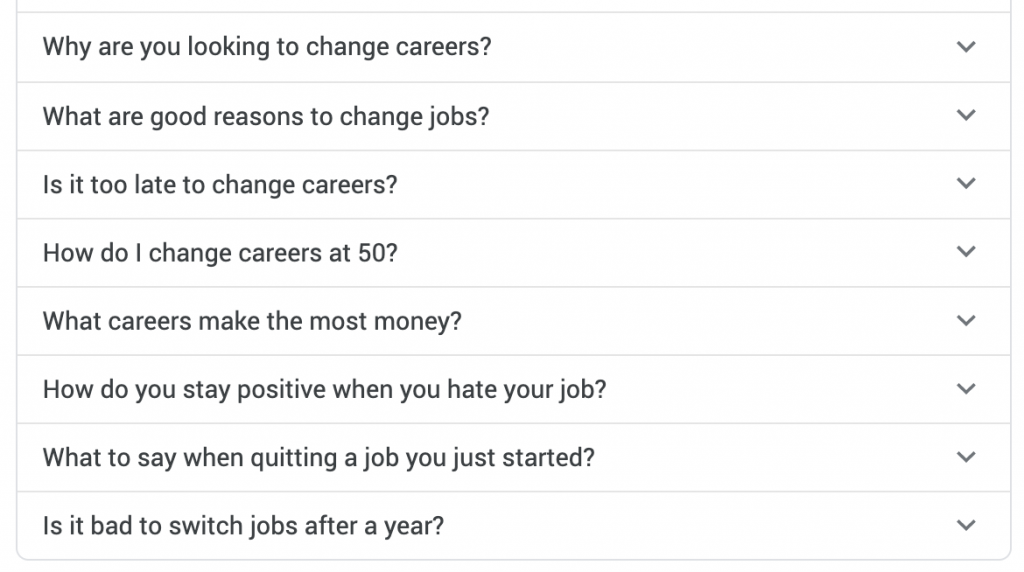
When I clicked around in the PAA box, it quickly devolved into a wealth of nuggets on people wanting to quit their jobs or get happier at jobs they hate.
How to use “People also ask” box for content ideation
First, interact with PAA questions
Make sure you pay special attention to the most interesting and relevant questions around your search because G personalizes new questions added based on your interactions.
“How do you stay positive when you hate your job?”
That looks tasty. Let’s click – boom:
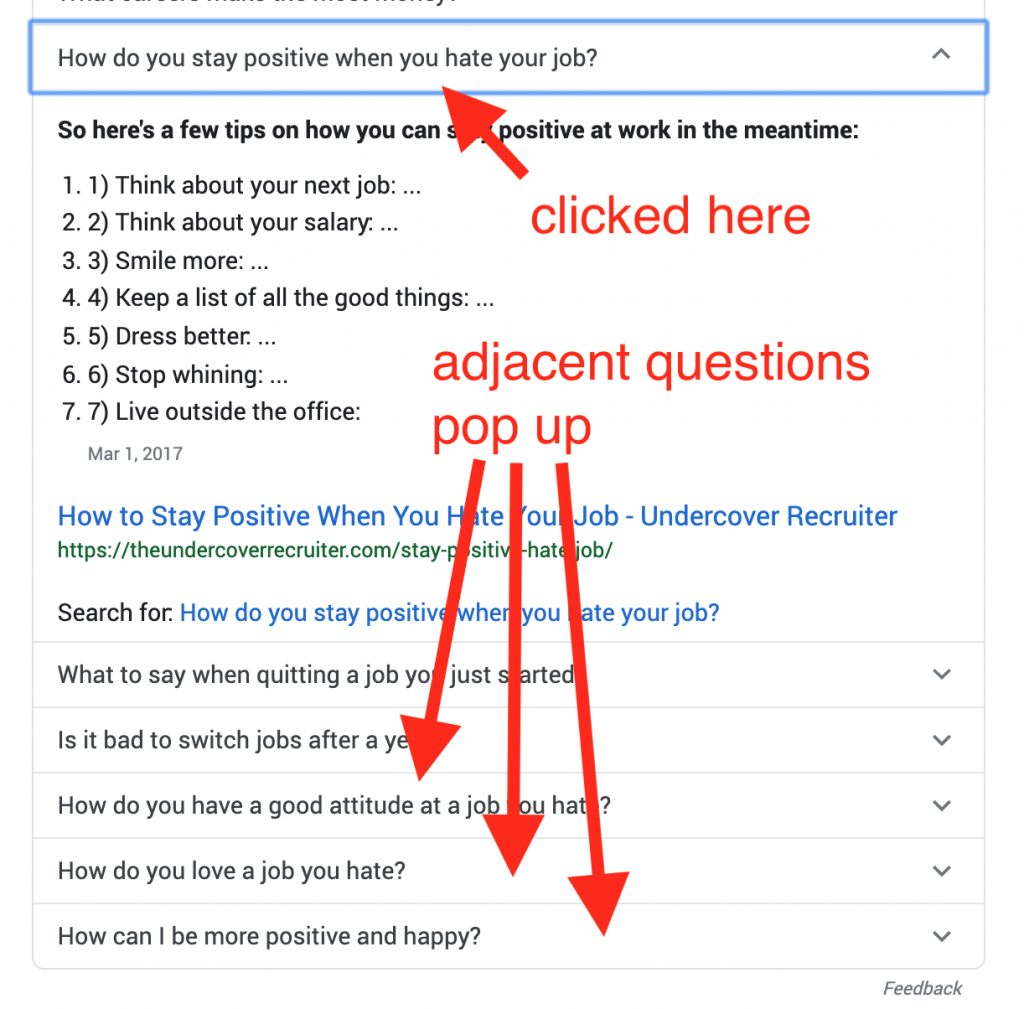
If you don’t have one, get a web scraper extension
We’re using “scraper for chrome” for our purposes here.
Once activated, right click the area you want to “scrape similar” parts of page for by right clicking and choosing “Scrape siimilar…” from the drop down options.
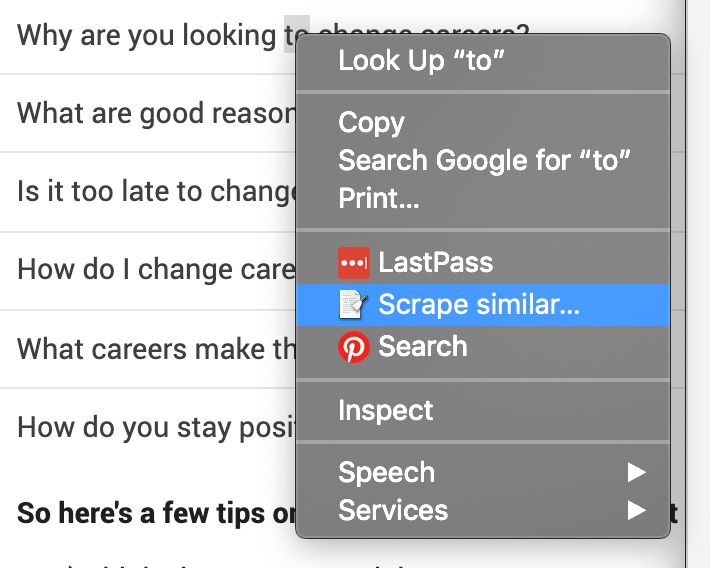
Scraper should popup with the XPath selector populated:
Then you can grab all of them with this XPath:
//div[2]/g-accordion-expander/div/div
Remove the number and square brackets (in our case this is “[2]) but it will be dependent upon which question you right-click on. Once removed you should have this:
//div/g-accordion-expander/div/div
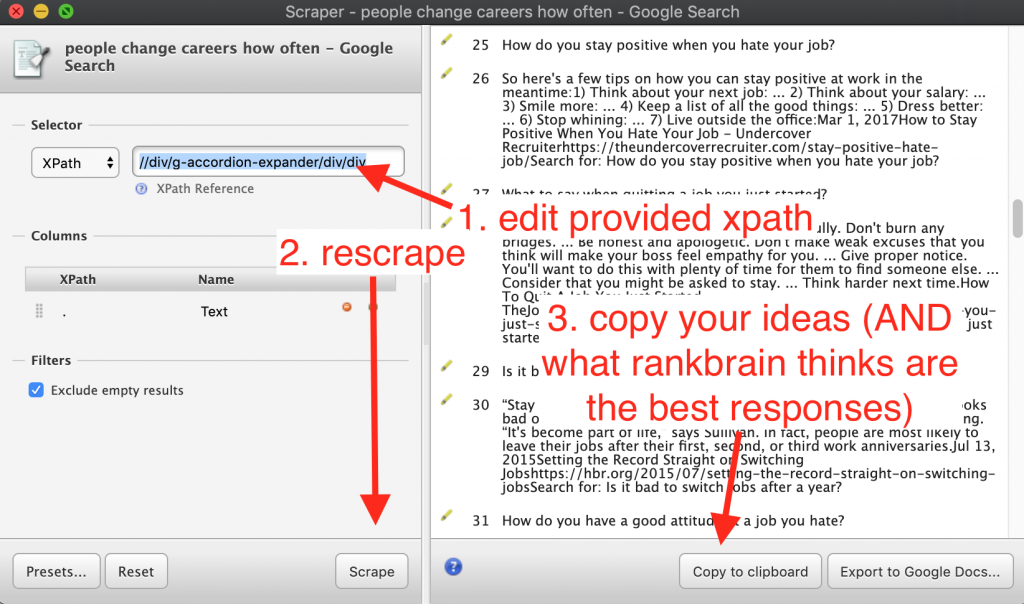
After editing the xpath, and hitting “scrape,” you should get the full list of questions and answers in the right hand window.
To summarize the above steps:
- Click to expand relevant answers from “People also ask” box and watch new questions populate at the bottom.
- Repeat this process until it looks like you’re being served the same questions.
- With “Scraper” chrome extension downloaded and active, right click one of the questions in PAA and select “Scrape similar…” from the dropdown.
- In Scraper popup window, under Selector input, remove the number and square brackets.
- Rescrape, but hitting the “Scrape” button.
- Then copy your scraped answers by hitting “Copy to clipboard.”
Remove the questions you didn’t care to click on
Inevitably, you won’t care about certain questions. And by default “Scraper” will scrape all questions and answers regardless of whether they were clicked (it’s all already in the DOM).
As an aside: make sure you click on all the questions you care about for this to work!
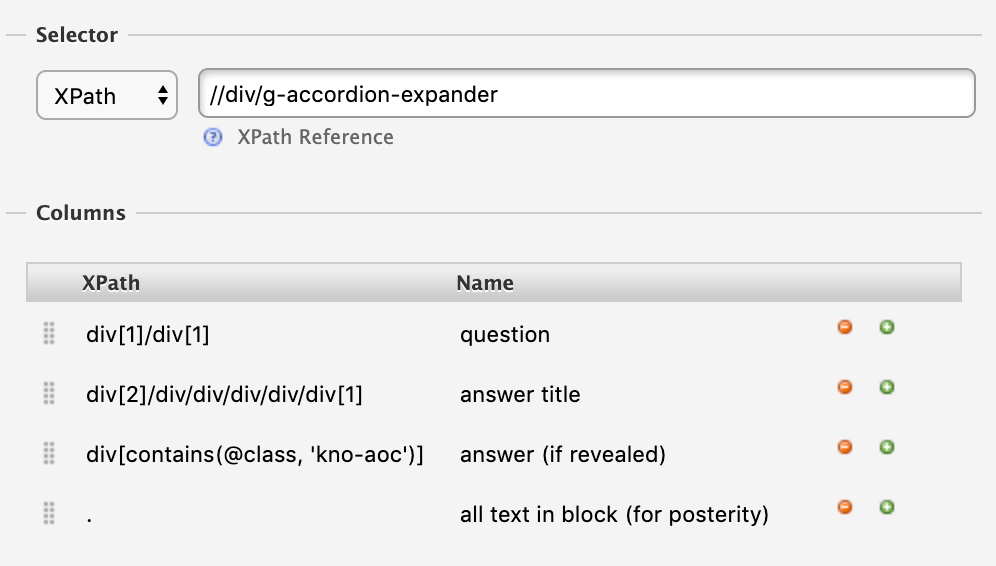
For the top input, you place your top-level tag.
For the “columns” you can map tags within the top level tag and name them.
//div/g-accordion-expander
div[1]div[1]
div[2]/div/div/div/div/div[1]
div[contains(@class, ‘kno-aoc’)]
.
Most importantly, you can save this as a “Preset” – just click “Presets” button in the bottom right hand side of the scraper popup, name your preset and hit “Save”
Then you’ll have it forever.
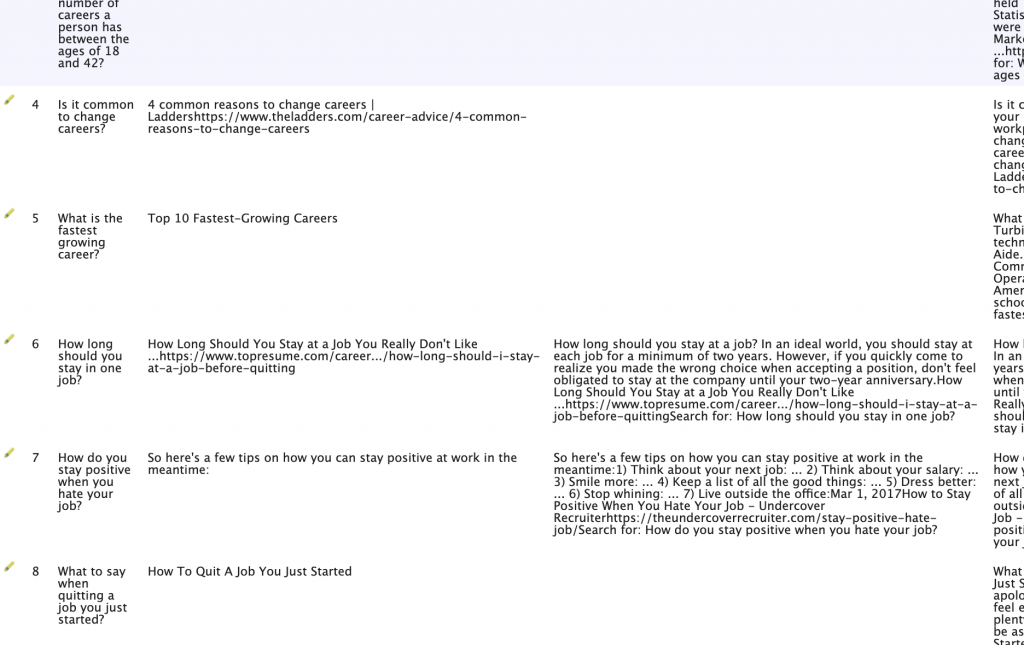
Exporting to Google Docs gives us all questions listed, but with only the clicked answers in Column C.
Click on column C and then go to the menu: “Data” > “Create Filter,” click the little filter triangle icon, click “Filter by condition…” and select “Is not empty” from the dropdown.
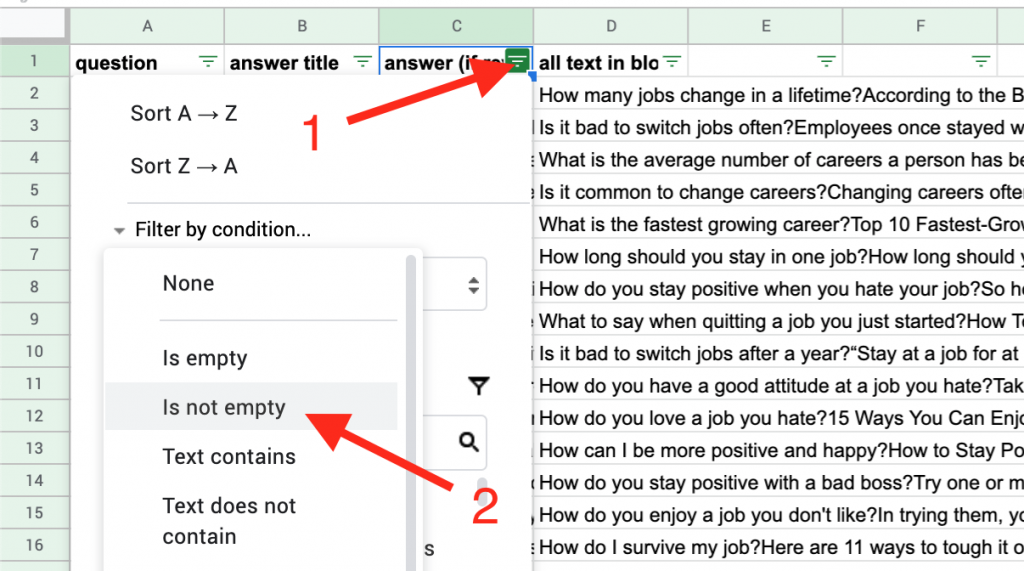
This will show us just questions and answers from PAA results we clicked:

This is where it gets interesting. Now we can start sorting by similar questions and look for patterns that we can turn into topic clusters or a checklist of items to cover in our next post. What do you see?
How do you stay positive when you hate your job?
How do you have a good attitude at a job you hate?
How do you love a job you hate?
How do you stay positive with a bad boss?
How do I survive my job?
How do you stay sane in a toxic work environment?
How do you deal with a toxic work environment?
How do I make myself like my job?
How do I fall in love again with a job?
If you look at the search intent, it might all seem pretty similar, e.g. “how do I improve a work situation”
I’ll tell you what I see:
- how to improve a situation you’re in
- stay positive, keep a good attitude, like/love again
- stay sane, deal with, survive
- what types of situations:
- a job you hate, a bad boss, a toxic work environment
Maybe more importantly, I see phrasing that shows a continuum of severity and users are subconsciously prioritizing internal vs external solutions.
Someone looking for help coping is thinking, “how long do I have to stay at this job without hurting my resume/future.” They’re in survival mode.
Meanwhile the other group is trying to re-spark a passion.
I don’t think one post should serve both audiences, but that’s a conversation for another time.
If you end up trying this out, I’d love you to share what you come up with!
